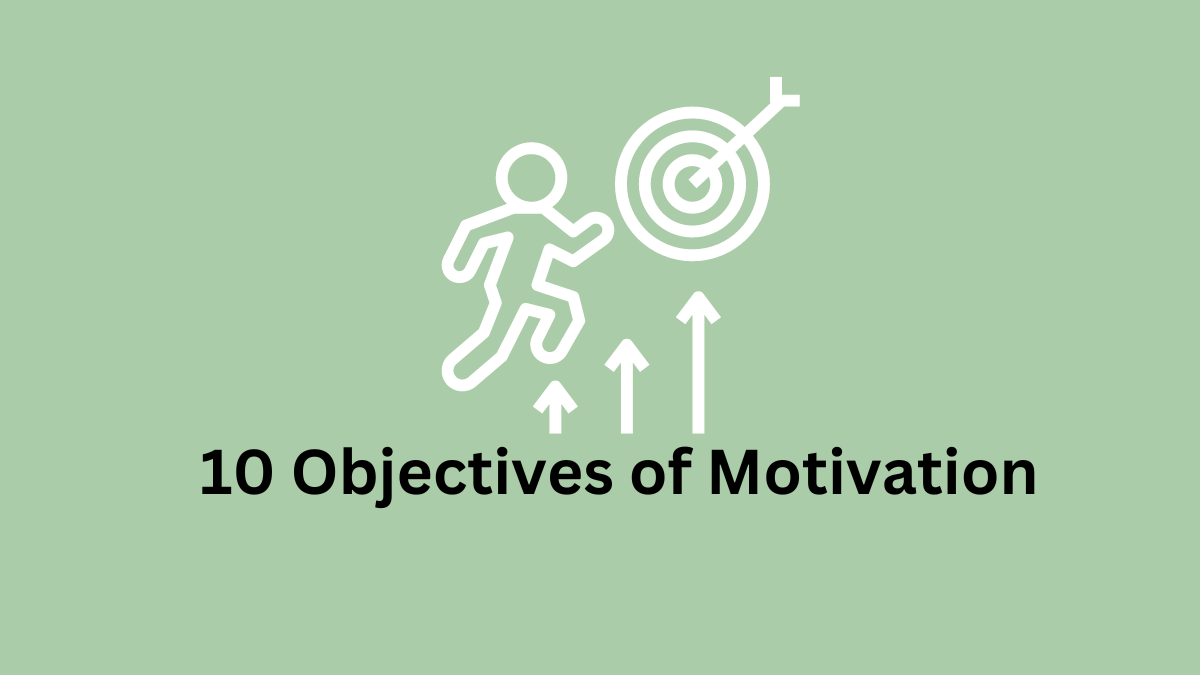Objectives of Motivation
Motivation is the process of influencing employees in a way they perform their best. The following are the 10 major objectives of motivation in the workplace:
Enhance Job Satisfaction
Motivation aims to increase job satisfaction among employees by creating a work environment that fulfills their psychological and emotional needs.
When employees feel valued, recognized, and rewarded for their contributions, they are more likely to experience job satisfaction, leading to higher levels of engagement and commitment to their work.
Increase Productivity
One of the primary objectives of motivation is to boost productivity levels within the organization. Motivated employees are more focused, dedicated, and proactive in their roles, leading to improved efficiency and output.
By aligning individual goals with organizational objectives and providing the necessary support and resources, managers can inspire employees to perform at their best.
Reduce Turnover and Absenteeism
Motivation aims to reduce turnover and absenteeism rates by creating a positive work environment where employees feel valued, engaged, and fulfilled.
When employees are motivated and satisfied with their jobs, they are less likely to seek employment elsewhere or take frequent unplanned absences. This not only saves the organization’s recruitment and training costs but also promotes continuity and stability within the workforce.
Foster Employee Engagement
Motivation seeks to foster employee engagement by encouraging active participation, involvement, and commitment to organizational goals and objectives. Engaged employees are emotionally invested in their work and demonstrate a strong sense of dedication, ownership, and loyalty to the organization.
By promoting open communication, recognition, and opportunities for growth and development, managers can cultivate a culture of engagement that drives performance and innovation.
Promote Employee Well-being
Another objective of motivation is to promote employee well-being by addressing their physical, emotional, and mental needs. Motivated employees are more likely to experience lower levels of stress, anxiety, and burnout, leading to improved overall well-being and work-life balance.
By offering wellness programs, flexible work arrangements, and supportive resources, organizations can create a healthier and happier workforce.
Read More: What is Conflict Resolution?
Improve Morale and Team Dynamics
Motivation aims to enhance morale and foster positive team dynamics by creating a supportive and collaborative work environment. When employees feel motivated and valued, they are more likely to experience higher levels of morale, camaraderie, and mutual respect within their teams.
This not only strengthens interpersonal relationships but also promotes teamwork, cohesion, and synergy, leading to better performance and outcomes.
Facilitate Organizational Growth and Success
Motivation plays a crucial role in facilitating organizational growth and success by driving individual and collective performance toward achieving strategic objectives. Motivated employees contribute their skills, creativity, and energy toward innovation, problem-solving, and continuous improvement initiatives.
By aligning motivation with organizational goals, leaders can propel the company toward sustainable growth, competitiveness, and long-term success.
Read More: 4 Types of Teams in the Workplace
Enhance Leadership Effectiveness
Motivation aims to enhance leadership effectiveness by empowering managers with the skills, tools, and strategies to inspire and motivate their teams. Effective leaders understand the importance of motivation in driving performance and recognize the unique needs and preferences of each employee.
By adopting motivational leadership styles, such as transformational leadership or servant leadership, managers can create a positive and empowering work culture that inspires loyalty, trust, and commitment.
Promote Diversity and Inclusion
Motivation seeks to promote diversity and inclusion within the workplace by recognizing and celebrating the unique backgrounds, perspectives, and contributions of all employees.
Read More: 5 Steps in the Controlling Process
Motivated employees thrive in environments where they feel respected, valued, and included, regardless of their gender, race, ethnicity, or cultural background. By fostering a culture of acceptance, openness, and equality, organizations can harness the collective talents and potential of a diverse workforce to drive innovation and success.
Create a Positive Organizational Culture
Finally, motivation aims to create a positive organizational culture that values and prioritizes employee well-being, engagement, and success. A positive culture is characterized by trust, transparency, integrity, and mutual respect, where employees feel empowered to voice their opinions, share ideas, and contribute to the organization’s mission and vision.
By embedding motivation into the fabric of the organizational culture, leaders can create a workplace that attracts, retains, and inspires top talent, fostering long-term sustainability and prosperity.
Hence, the above are the 10 major objectives of motivation in the organization.
Read Next: Directing in Management

Sujan Chaudhary holds a Bachelor in Business Administration (BBA) degree and is currently pursuing an MBA degree. He loves to share his business knowledge with the rest of the world.
